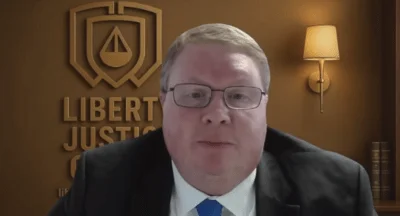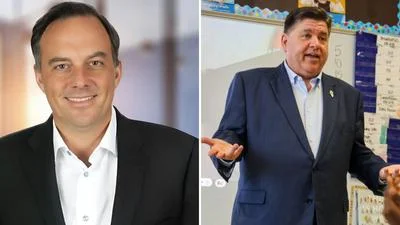Illinois Department of Human Services OFVP Firearm Violence Research Group met Feb. 1.
Here are the minutes provided by the group:
Attendees: Javon Gregoire (IDHS), Sean Gallardo (IDHS), Joe Hoereth(UIC), Daryl Kroner (SIU), Lance Williams (NEIU), David Olson (LUC), Grace Hou (IDHS), Delrice Adams (ICJIA), Soledad, McGrath (NWE), Timothy Lavery (ICJIA), Wendy Nussbaum(IDHS), Christopher Patterson (IDHS), Mehar, Satsangi (UofC), Roy Rothschild (UIC), Jon Patterson, Kim Smith (IDHS)
Discussion
Welcome/Roll Call
Joe Hoereth, PhD, Director (Institute for Policy and Civic Engagement, University of Illinois Chicago (UIC)) and Assistant Secretary Christopher Patterson (Office of Firearm Violence Prevention, Illinois Department of Human Services (IDHS)) called the meeting to begin, meeting beginning @10:02am. They welcomed Research Group thanking them for their work within the community. Secretary Grace Hou (IDHS) thanked everyone that has participated in this. "Starting something new is challenging but we are making good progress and are working with great people. Please feel free to reach out if you need anything."
Public Comment
* Subject to written comment in advance No Comments were received via email
Research Group Information and Appointments
Javon Gregoire, Senior Policy Advisor (OFVP, IDHS) and Sean Gallardo (Office of Secretary, IDHS) provided information to the group regarding:
Formal appointments and open meetings act guidelines
Current office OFVP updates
Support of ongoing research guidance and purpose
Sean Gallardo went over the Open Meetings Act guidelines with the Research Group. Act. We will also provide links regarding the Open Meetings Act on the website.
The overview of the OFVP was provided to the Research Group.
* We compiled a list of potential LAC Members outside of Chicago so that they can provide us with recommendations on how to support their communities. Uses the community Mapping that shows how we can serve existing areas that are doing important work. Conveners are being asked to guide/coordinate activities. Violence prevention, Youth dev. Hope to be ready to support communities by March of 2022.
Discussion & Work Items:
Joe Hoereth, PhD, Director - Institute for Policy and Civic Engagement, (UIC)
FVRG Immediate Priorities
Support for Local Advisory Councils
OFVP Performance Measures and Assessment Tools
The Research Group was given an insight of their expected purpose and what the LAC is.
* A body of local representatives outside of Chicago that are coming together to think collectively and provide the best input of OFVP on how better the community can be supported.
The Research Group was given information in regards to a Toolkit (a set of resources) to be shared upfront to set levels but also to start thinking about information needed. The resources will include:
Summary Doc on research Literature
Policy List: How does is influence risk of firearm violence
What we know about effective models or reading material that is available. Something related to the data profile or asset mapping. Started a draft related to that. Compiled demographics of the community. We can uses your expertise on this
Performance metrics to support the NOFO's . You want to hear and understand from the recipients on how to spend the money.
Joe Hoereth, UIC shared the Data Profile and explained the data compiled in the spreadsheet. Joe Hoereth asked the Research Group to think of specific data points that can be included in the final Toolkit.
Joe Hoereth and ChrisPatterson asked the Research Group about some ideas that they may have that can be used as a profile? What are some ideas of data that can be used for a profile?
The Research Group voices ideas such as:
A fact sheet being included. What are the dynamics of difference and that information should be visible for each city.
Provide information on crime (violent,gun) What is provided for Berwyn is good but it doesn't have context /comparison to the state as whole or a similarly sized area. How do all the sites line up? vs. the rest of the state.
Research Group want to make sure that communities specifically where gun violence tends to be highest to have micro level demographics. Had to have data in the hot spot areas. The data is general. We need to get as micro level as we can get as it pertains to demographics. We don't have data at the beat level. There are no areas outside of Chicago that has the information pulled together in comparison to Berwyn
We can identify Rockford at a high right but from the data we can't see that. Now that we identified the most micro demographic area we can provide information from the census.
The Group agreed that it will be embraced more if the expertise was centered in thi and the information guided by what they want to see/know.
The Group discussed Healthcare need to be a category
Intervention/Prevention the difference needs to be explained across all the areas will be helpful to have in the toolkit for where their needs lie.
Policy List: How does this influence risk of firearm violence Cultural programs are a recommended strategy for youth.
Focusing on prevention: This idea low hanging fruit: Arrest data/profile, parolees from the IDOC. Connect to the areas of need in terms of one of the councils will know what grants are being received within the municipalities but citizens will not. What/Who is already funded?
LAC's want to know what exists and what are the goals and are they achieving them. It will be helpful to understand what the LAC's trying to accomplish and what is the current landscape.
Gregoire explained that we are preparing LAC's by looking to provide data profile and best practices for Firearm and Violence Prevention. The resources/services and what to do with the services.
The Research Group was given some guidance on what their role would be.
* To provide a more streamlined guidance to help LAC's make sense of what they are looking at. Guidance on more in-depth planning and then guide to available resources or services available to them. We want to make sure what we're giving them is reflective of what is happening in the community and make sure the resources are there for them.
The Research Group made recommendations on what to include in the (2) pager. The Group agreed that LAC's Include mental health, housing, education and direct us in a way that will deal with long term firearm violence prevention. They suggested the document be flipped as a whole. The suggested to include URLs and added resource links. Lavery suggested including examples of programs.
Joe: We can draw those connections in the second section. Or mention it in line with the text. I'm thinking either way.
The Assessment Tool data sheet was shared with the group and the data included follows.
* The screening tools that programs will use as participants are entering into their programs. The providers need to use a screening tool. And all programming needs to be trauma informed. Tools out there may not be robust to identify the issue, we scanned to look at different tools that we can use. We found 5 or 6 tools. What seems to be common is YASI. 33 areas that the participant was being screened on. The Group was asked for any ideas on toolkits that are currently out there. The Research Group referenced
Dr. Rachel Garthe, UIUC, working with us on our statewide violence program. "Resource Library" and possibly adding the links to her document into the (2) pager.
May suggest 20 items to screen risk of gun violence mental health and trauma. List of 15 items could drive to have them embedded in the data system. Have a validated checklist to assist you to get going.
YASI is currently being used by the department and has a lot of information in regards to youth services
.Joe Hoereth shared the document Lavery R3 Metrics with the group. R3 created categories that were guidelines to the group on what information they were being evaluated on. R3 Metrics helps programs organize their plans and work and help to identify/put theory of change into a logic model.
Always bump it off on the provider. It is particularly necessary for R3 because the scope of the funding is more broadly misunderstood.
The baseline of stuff that we know they can do based on funding, the rest is helping and guiding them.
The Grantees were able to get processes set up quickly because the categories were broken up according to the programs.
Next Steps
Action Items and Timeline
Goals for Next Meeting/ Close Out
Proposed Next Meeting Date/ Time
Tuesday, February 15, 2022 @9:30am
Meetings will be held once a month * Do we utilize information DHS has already for client evaluation?
Follow up to see if there is any information that needs to be collected for the Legislature.
Update everything that was shown on the screen
Assessment tools thinking about the broader scope and how best the office can take advantage of what is out there but tone in to specifics.
Continue discussing metrics from Lavery document
Flush out data profiles
Look out for information in regard to the Open Meetings Act
Goals:
Encourage anyone that has resources/materials that are useful please share.
To further flush out/finalize the toolkit items and begin to look further at metrics and anything else long going.
Meeting adjourned @12:07pm
https://www.dhs.state.il.us/page.aspx?item=141699





 Alerts Sign-up
Alerts Sign-up